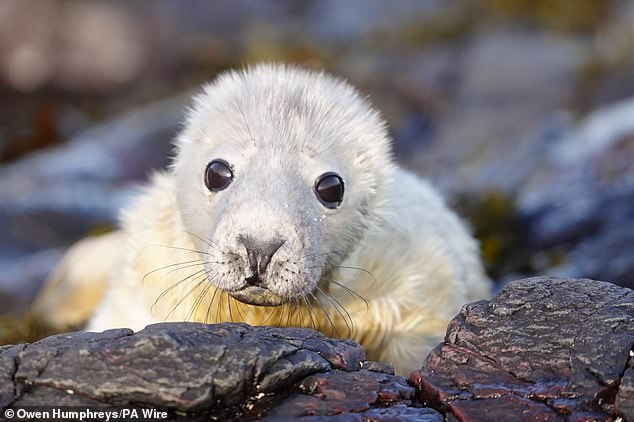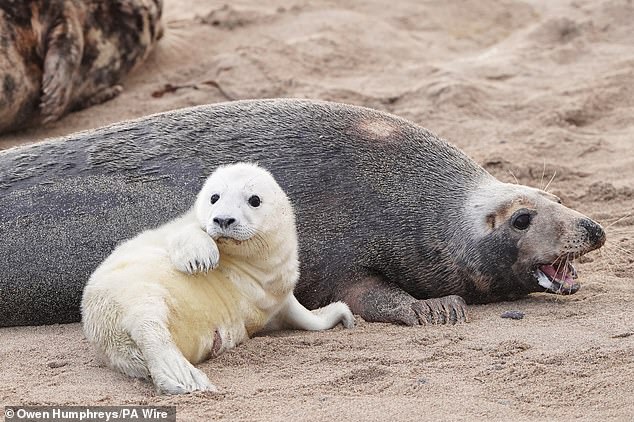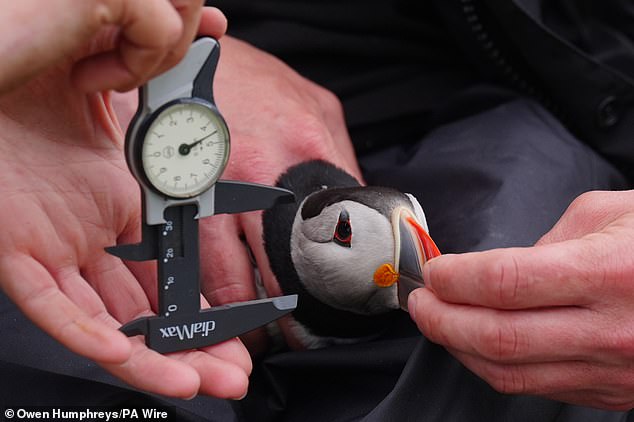Researchers will use drones this year as they kick off their work on the world’s longest-running grey seal population study.
Since 1952, wildlife experts have observed the number of pups born on the rocky archipelago off the Northumberland coast.
The way the survey is carried out has changed to help protect examiners from being attacked by the pups’ protective mothers and to be less intrusive to the seals.
Instead of dabbing paint onto seals as a mark that it has been counted, a drone flying 75 metres above will help collect data.
When the study first began 73 years ago, only 500 pups were born on Farne Islands. Figures jumped to 3624 last year, and the islands are considered one of England’s biggest grey seal colonies.
The Farnes is uninhabited by humans and is an area rich in rocky beaches , sand, grass, and space with plenty of food for the mammals.
The National Trust has prevented visitors from setting foot on the island for 100 years during the pupping season.
People can only view the spectacle from boat trips.

When the study first began 73 years ago, only 500 pups were born on Farne Islands. Figures jumped to 3624 last year, and the islands are considered one of England’s biggest grey seal colonies
National Trust area ranger, Sophia Jackson, said it is always a special moment witnessing the arrival of the first pup.
‘This annual monitoring is especially important given that the islands have the world’s longest-running dataset for monitoring this particular species,’ Ms Jackson added.
She acknowledged pioneering ornithologist and naturalist, Grace Hickling, who started the project in 1952 and has helped shape modern conservation efforts in Northumberland.
Ms Jackson continued: ‘Each pup born here is a testament to the conservation work we do and the resilience of this species in the face of environmental challenges, particularly due to rising temperatures and warming seas.’
Area ranger, Tom Hendry added: ‘The sighting of the first pup triggers the start of our count, and we’re curious to see if the upward trend in pup numbers continues from 3,443 pups in 2019 to 3,624 in 2024.’
Newcastle University will analyse the data, which will continue to be gathered throughout Autumn.
Results for the seal survey are expected in Spring.
Another species that lives on the Farne Islands and has risen to internet stardom is the puffin.

To help protect examiners from being attacked by the pups’ protective mothers, they will instead fly a drone 75 metres above to collect data

Puffins also live in Farne. Here is one feathery friend pictured in May – during the second annual bird count since Covid

Webcams have been set up on the Farne Islands, so that more people can become seabird ‘watchers’
The trust has also been keeping track of the bird population to keep conservation data up to date and informing scientists on the right steps for their future.
Like the grey seal, the trust also has records of the puffins’ population dating back to the 1950’s which is used to direct conservation work.
Ms Jackson acknowledged how the data was also useful for monitoring the impacts of climate change with on the puffin.
She said the seabird is spending more energy on finding fish as their food source moves further away to cooler temperatures, which also results in their chicks either starving or being abandoned.
Ms Jackson explained conservationists on the island say they are doing all they can to make sure seabirds have a bright future in the next 100 years.
‘But climate change, especially its impact on the severity of winter storms and extreme weather events, are the biggest threats facing both our seabirds and seal populations.
‘Winter storms can also wash seal pups off the rocks and several pups died when Storm Arwen hit the islands in 2021,’ she said.
